Comprehensive preparation and synchronized management from materials gearing to acceptance ensure timely delivery and quality in efficient transformer station construction.
Meticulous Preparation for Transformer Station Construction
Constructing a transformer station rapidly demands thorough preparation, from checking the compliance of materials and devices to preparing design sketches and legal formalities. Pre-evaluating equipment avoids disruptions from shortages or substandard items. Besides, ensuring all necessary permits and logistics are complete avoids any bureaucratic delays.
Site Survey and Site Selection
A critical first step in any transformer station project is conducting a detailed site survey. Evaluating terrain, soil conditions, and existing infrastructure ensures the chosen location optimally supports the system. Any deviation from the initial design must be thoroughly discussed with stakeholders.
Detailed Project Planning
Detailed project planning articulates job schedules, resource allocation, and equipment logistics. Collaboration with power utilities ensures that safety procedures are rigorously observed.
Materials and Equipment Preparation
Before construction begins, all machinery, insulating materials, and equipment designs undergo rigorous inspection to ensure they meet technical and safety standards. Trustworthy suppliers like Thibidi, EMC, ABB, and Schneider are preferred for high-quality products.
Technical and Legal Documentation Checks
Finalizing all legal procedures and preparing comprehensive technical documentation are essential prerequisites before commencing construction. Connection permits to the national grid and principle diagrams must be ready to prevent any administrative hold-ups.
Human Resource and Technical Team Preparation
Construction teams must be thoroughly trained in transformer station procedures and electrical safety protocols. They should be capable of swiftly managing on-site situations.
Main Construction Steps
Meticulous preparation paves the way for a smooth construction process, including:
- Excavating foundations and underground cable trenches.
- Installing protective tubing and grounding systems.
- Erecting primary structures like supports and transformers.
- Connecting devices to the electrical system.
- Setting up and inspecting necessary safety signs.
- Conducting phased testing and commissioning for safe operation.
Thorough preparation mitigates unnecessary risks, ensuring progress and quality in transformer station construction.
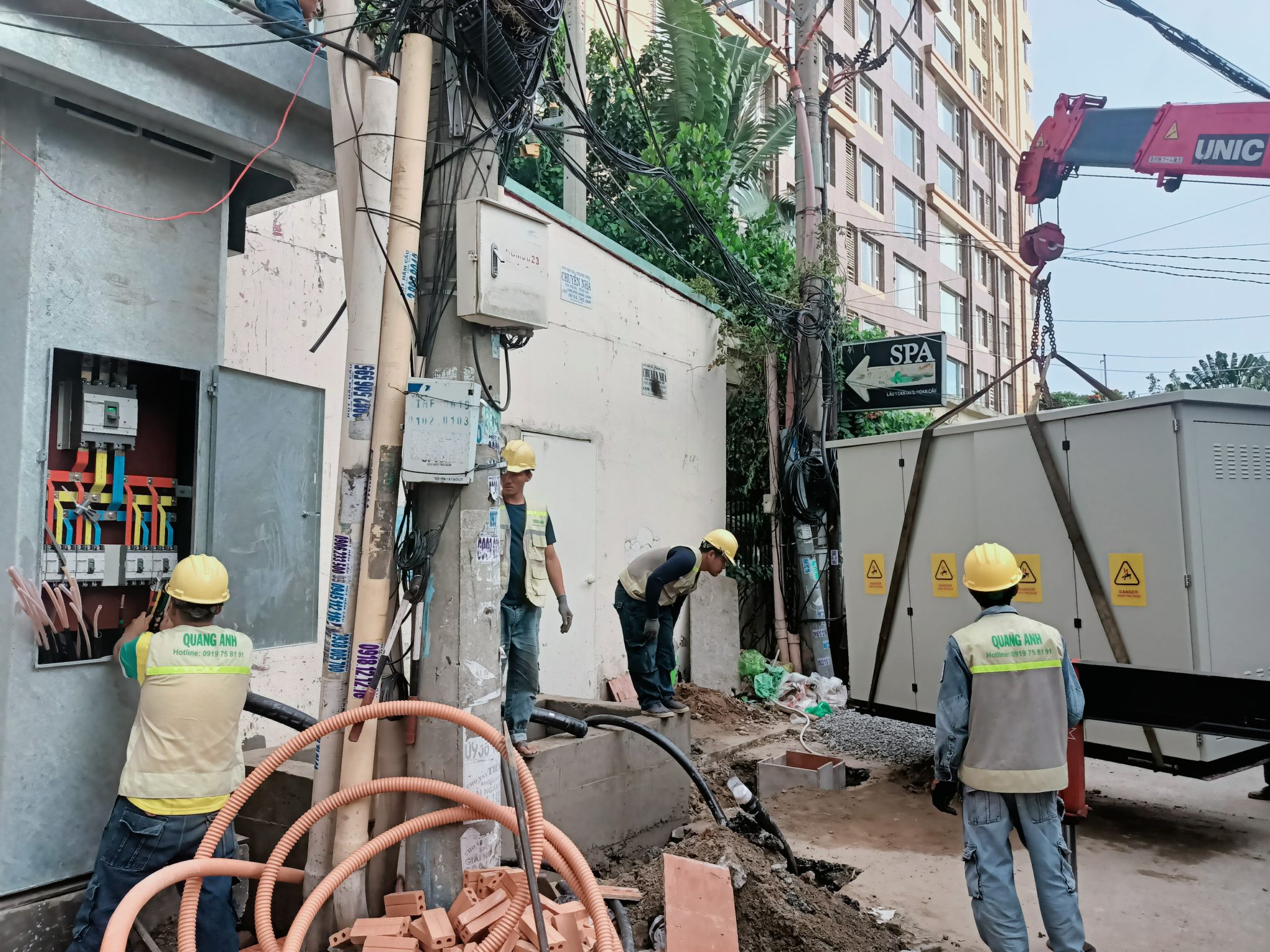
Determining Location and Installing Key Components of Transformer Station
Accurate site selection for transformer stations is crucial for performance and cable connection convenience. Installing grounding systems, transformer support, and technical enclosures is vital for electrical safety control. Installation of low-voltage cabinets, transformers, RMU cabinets, and other electrical devices follows a detailed plan to ensure effective and safe functioning.
The strategic location of a transformer station ensures efficient operation and maintenance of the electrical system. To effectively situate transformers, consider the following:
- Near electricity load centers:
- Placing the transformer close to high-consumption areas reduces electricity losses in transmission.
- Larger capacity transformers should be positioned near the load center, while smaller ratio transformers may be proximate to the power source.
- Secure and stable:
- The site must comply with safety standards for fire prevention, minimizing dust and corrosive gas exposure.
- Operation and maintenance convenience:
- The location should allow easy access for maintenance and monitoring, especially for grounding systems.
- Cost-effective and technically efficient:
- Choose a site with the lowest possible initial investment and operational costs.
- Optimized for travel and production activities:
- Avoid positions that hinder traffic or production activities, and ensure ventilation and fire protection.
Major Components Installation:
- Main Transformer: A critical component responsible for voltage conversion.
- Control and protection cabinets: Including systems for overcurrent, overvoltage, and lightning protection.
- Disconnection devices: Such as circuit breakers, essential for isolation during maintenance.
- Electricity metering systems: This must suit the connection point to ensure accuracy and ease of monitoring.
- Lightning protection and grounding system: Protects equipment and installations from adverse weather conditions.
- Insulation and environmental protection systems: Featuring insulating equipment and anti-corrosion precautions.
Transformer Installation Process:
- Survey and Planning: Comprehensive site assessment and operational requirements.
- Site Selection: Apply the outlined technical and safety criteria for location choice.
- Detail Engineering Design: Review equipment layout and electrical systems for operational and maintenance optimization.
- Foundation and Infrastructure Construction: Conducting concrete foundation work for the station.
- Equipments Installation: Completing the setup of transformers, control cabinets, and interruptor systems.
- Testing and Commissioning: Performing compliance checks and trials before commissioning.
Electricity Metering Location
- Determined at or near the main power connection point. If not feasible, negotiate the metering location and appropriate power conversion methods.
By adhering to standards on these factors, transformer station systems maintain stable and robust operation in challenging environments.
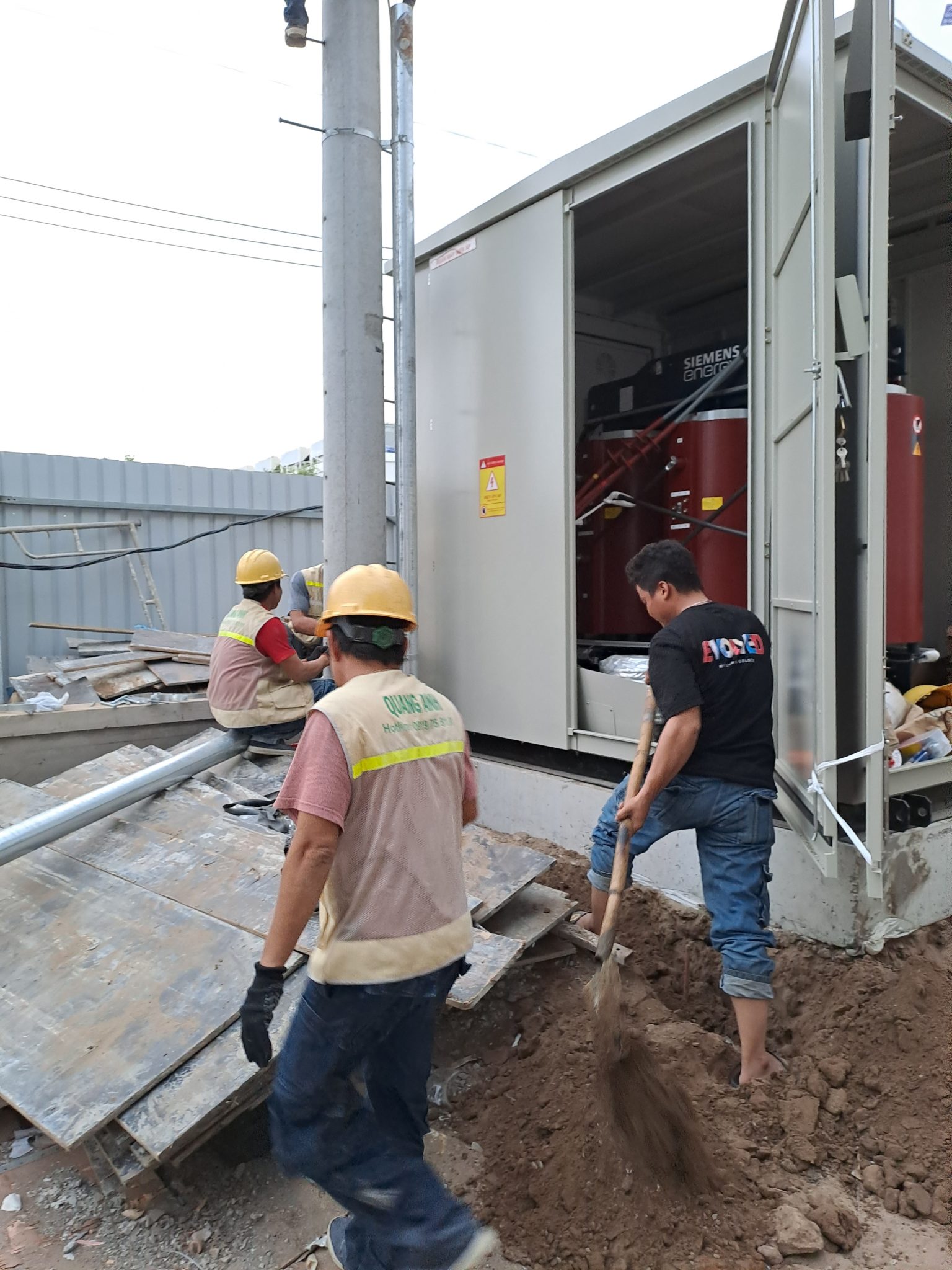
Efficient Installation of Underground Cables and Connections
A pivotal process in rapid transformer station deployment is underground cable installation and interconnection. Appropriate power outage scheduling minimizes disruptions in surrounding areas. Laying underground cables, following strict technical regulations, from cable pulling to schematic-based connections, is crucial. Testing and adjusting installed equipment afterward ensures stable and safe operations.
Subterranean cable installation plays a critical role in creating underground electrical systems. This process demands strict adherence to each stage from surveying, planning, to execution.
Detailed Installation Process:
- Surveying and Construction Planning
- Inspect and mark locations while mapping trench segments to ensure the underground cable installation meets technical demands.
- Complete necessary legal processes like permits for excavation.
- Trench Excavation
- Ensure the trench width and depth meet technical specifications to keep 24kV cables unaffected by subsoil.
- Combine machinery and manual labor for excavation, safeguarding the surrounding environment.
- Cable Protection Pipe Installation
- Spread a sand base, then install HDPE or specialized protective pipes.
- Employ special adhesives and blades to ensure pipes are twist-free with no leaks.
- Cable Pulling and Installation
- Utilize devices like pulleys and cranes to gently usher cables through pipes, avoiding damage to the cable sheath.
- Employ pulling and pushing techniques to minimize stresses, optimizing project efficiency.
- Completion and Handover
- Cover with a final sand layer, refill soil, and compact to ensure post-installation ground stability.
- Conduct thorough inspections and site cleanups, ensuring handover adheres to technical standards.
Safety Implementation Measures:
- Pre-plan equipment and materials, ensuring compliance with design standards.
- Carefully excavate and lay pipes for lasting safety and efficiency. Use specialized gear for underground cabling, averting cable twisting.
- Regular worker training and supervision minimize potential job mishaps.
Notes on Underground Connections:
- Perform connections under optimal conditions, free from dust and moisture.
- Employ specialized tools and materials for superior insulation.
- Post-connection, verify contact and insulation, meticulously document for maintenance purposes.
Underground cabling requires accuracy and adherence to processes and safety measures to ensure sustainable, efficient system operations.
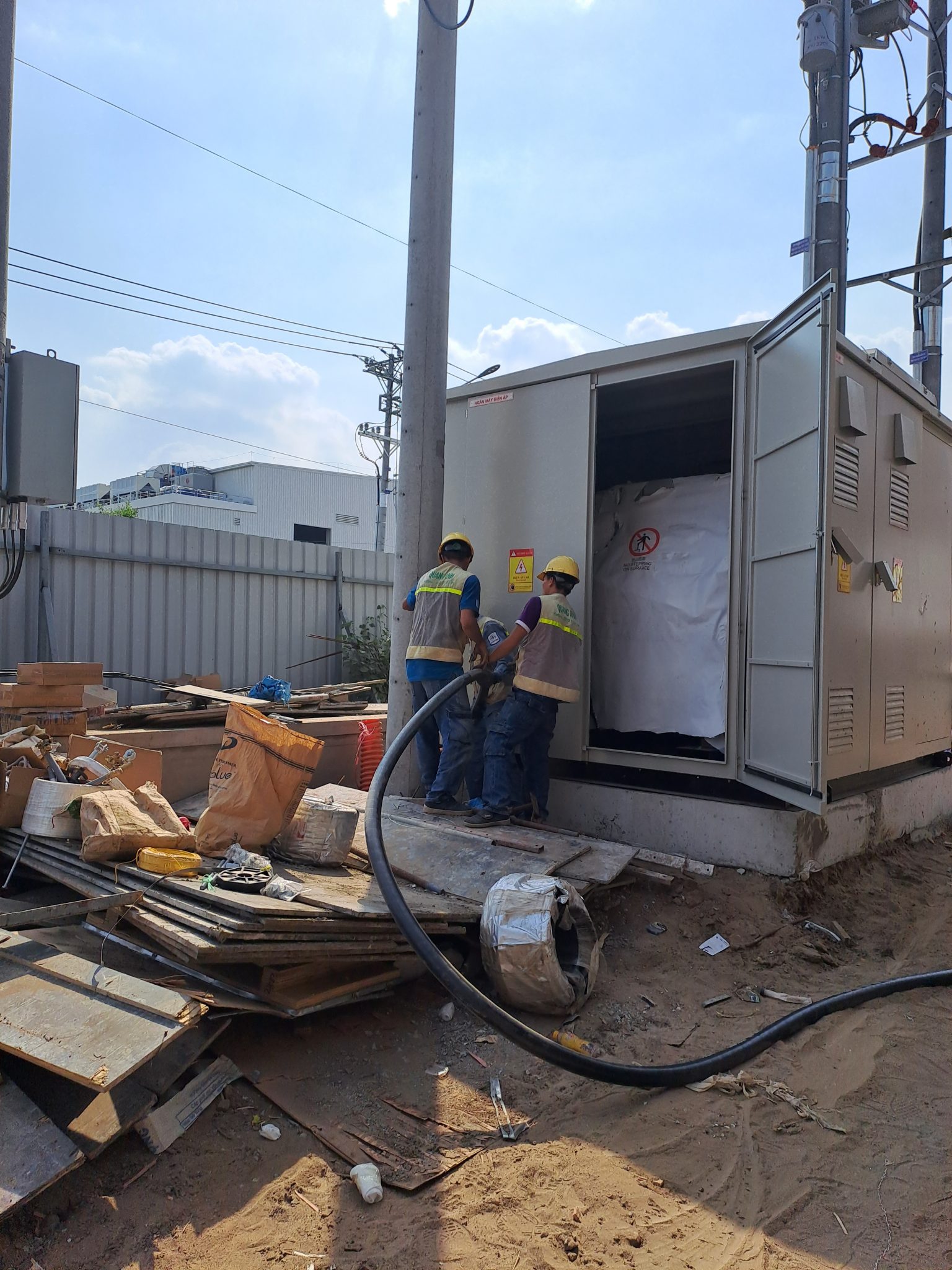
Testing and Commissioning Transformer Stations
Post-installation testing and commissioning steps are essential for ensuring transformer station functionality. The testing phase adjusts insulation, protection, and operation, followed by technical inspection to assess the entire system before operations start. Restoring the construction site cleanly without affecting the surroundings is the final step.
Transformer Station Testing Process
Testing is crucial to certify system quality and performance, focusing on three primary areas:
- Material and concrete mix testing: Validates building materials and concrete compositions against technical criteria, vital for durable transformer station construction.
- Electrical device checks: Formally test key equipment like transformers, electrical panels, protective relays, and conductors to ensure compliance with design specifications and technical norms.
- No-load trial operation: Run the transformer at no load for 24 to 72 hours to confirm operational stability and identify latent issues.
Transformer Station Commissioning Procedure
The commissioning phase evaluates construction quality, ensuring adherence to technical and safety standards:
- Commissioning Preparation: The investor compiles a full commissioning dossier, including construction summary reports, sectional completion certificates, design files, and inspections.
- Executing Commissioning: The commissioning board, including representatives from the investor, contractors, oversight consultants, and quality inspectors, thoroughly inspects elements like structural builds, electrical systems, and protective features.
- Cold testing: Inspect materials, devices, electrical resistance, and source cables before grid connection.
- Electric charging approval: Comprehensive checks post-electricity activation to verify operational parameters align with standards.
- Project Handover: Successfully commissioned projects are handed over to management for operation, meeting all technical and safety requirements.
Conclusion
Transformer station testing extends beyond mere material and equipment inspection, encompassing comprehensive commissioning to secure safe, efficient operations under technical and construction norms.
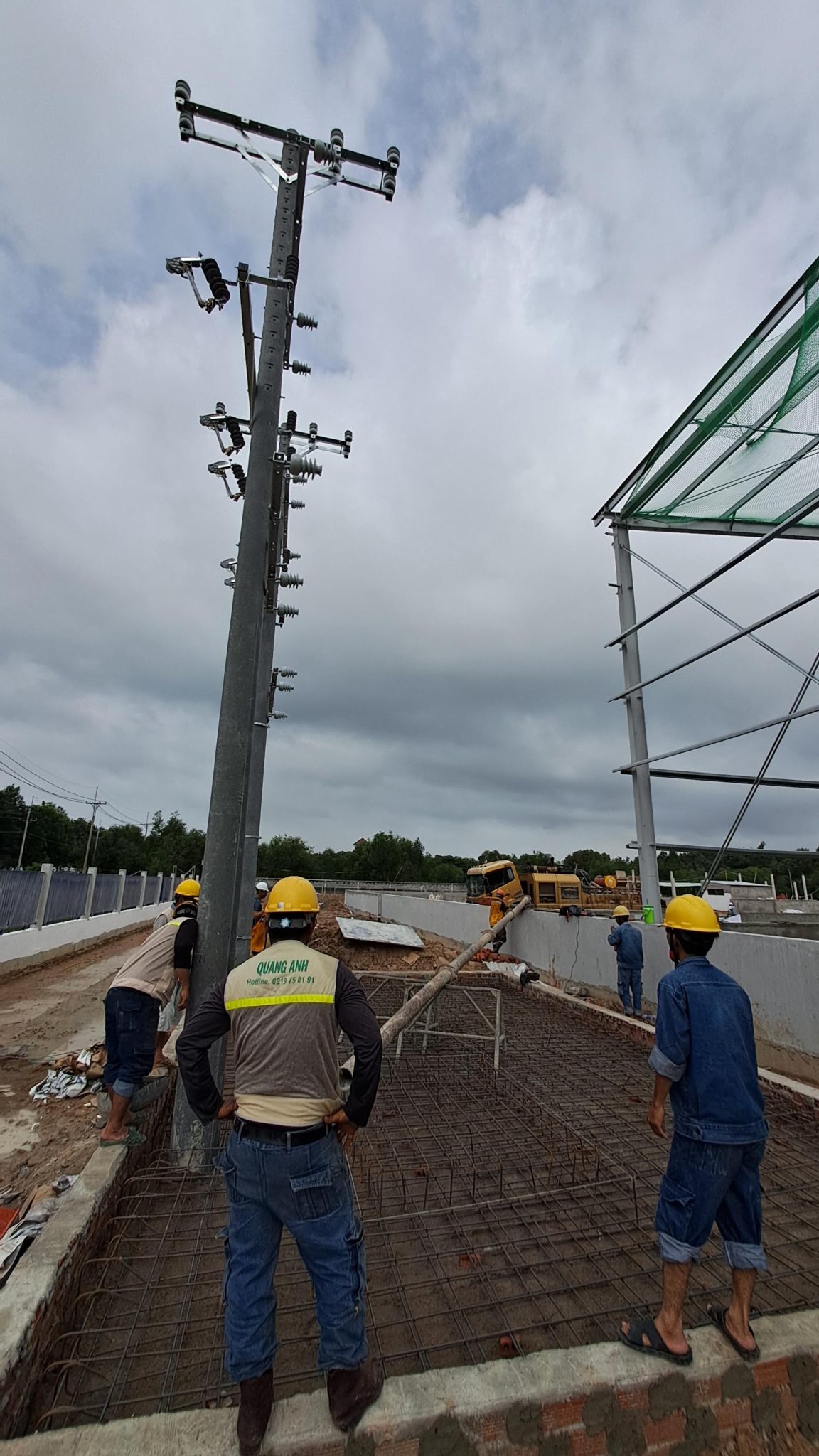
Measures to Expedite Transformer Station Construction
Efficient transformer station setup depends on pre-arranged resources and avoiding wait times. Using specialized machinery accelerates progress, while task divisions across teams minimize power outages and errors. Training qualified personnel and intensifying technical supervision promptly mitigate issues.
- Detailed planning and progress management: Rapid construction necessitates a detailed plan, defining work items, timelines, and resource needs. Rigorous progress management and specific goals per stage facilitate effective tracking and revising timelines as needed.
- Enhanced preparation activities: Ensure comprehensive preparation of necessary materials and tools to prevent delays from shortages. Staff training is also crucial to equip technicians with technical know-how and safety protocol awareness.
- Incorporating modern technology: Employ state-of-the-art transformer stations, specifically digital technologies, to minimize cable loads and trench sizes. Remote monitoring technology aids in swiftly addressing emergent issues.
- Process optimization: Construction should follow orderly sequences to secure consistency and continuity. Implement advanced construction techniques for ongoing improvements and initiatives that expedite construction speed.
- Assuring safety and quality: Workforce safety takes precedence, necessitating comprehensive protective gear for laborers. Consistent quality inspections ensure compliance with technical standards.
- Strengthening cooperation and communication: Effective communication with contractors, suppliers, and local authorities swiftly resolves issues. Multi-party collaboration streamlines the troubleshooting processes.
- Investing in modern equipment: Utilize lifting machinery and cranes to position transformers and bulky equipment precisely, optimizing time and effort.
- Monitoring and supervision: Daily progress reports allow close monitoring and timely adaptations to construction plans.
- Commissioning and delivery: Conduct technical trials and finalize inspections before operational handover to guarantee maximum safety and quality.
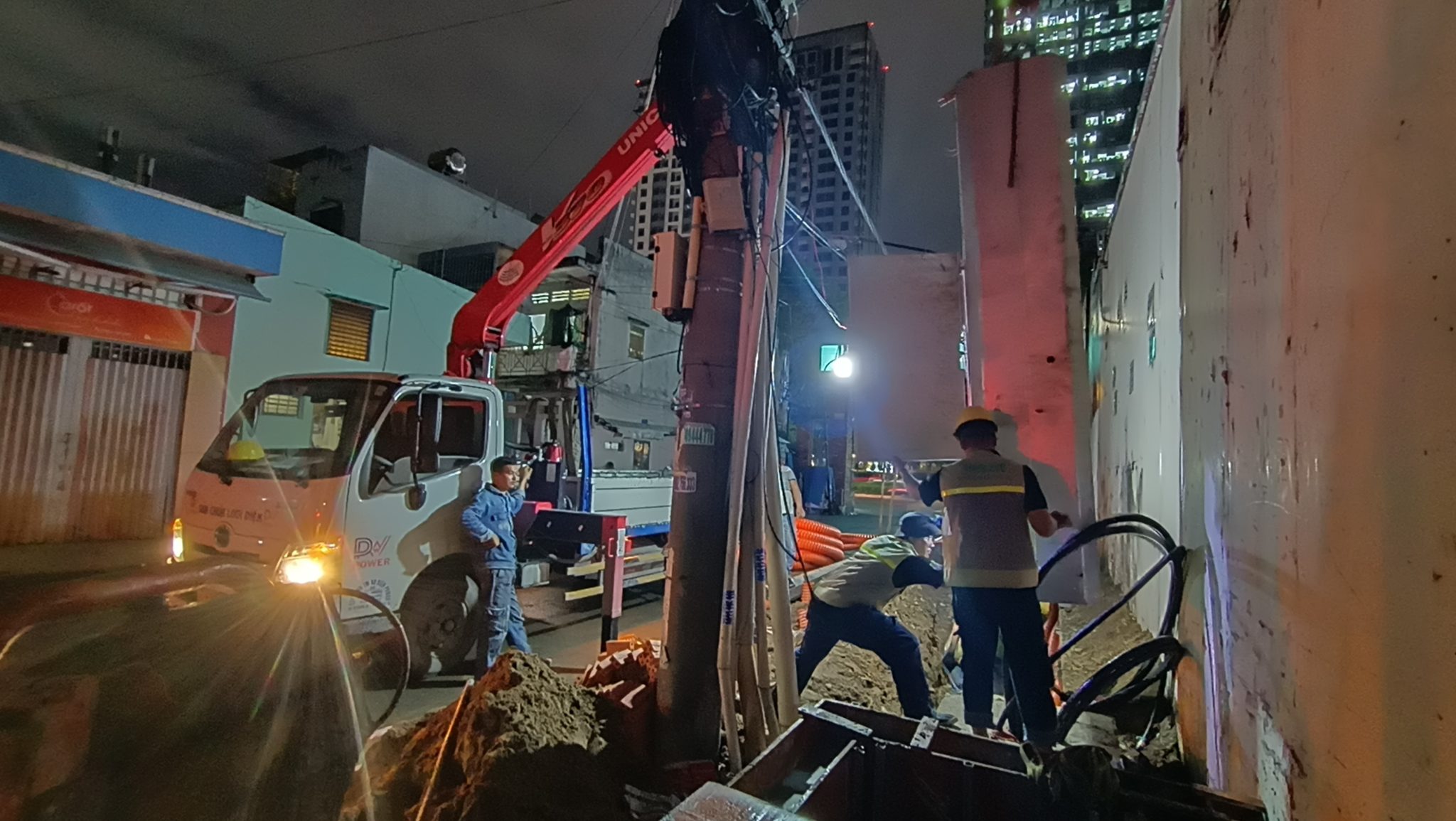
Through efficient transformer station construction, costs are optimized and operational performance enhanced through rigorous processes from preparation to commissioning. Modern technology integration, rational resource management, and thorough oversight ensure projects meet technical and timing requirements.
Contact QuangAnhcons at Hotline: +84 9 1975 8191 for fast and quality transformer station construction consultation.
QuangAnhcons specializes in transformer station construction services, offering skilled technical teams and cutting-edge technology to assure project timeliness and quality.

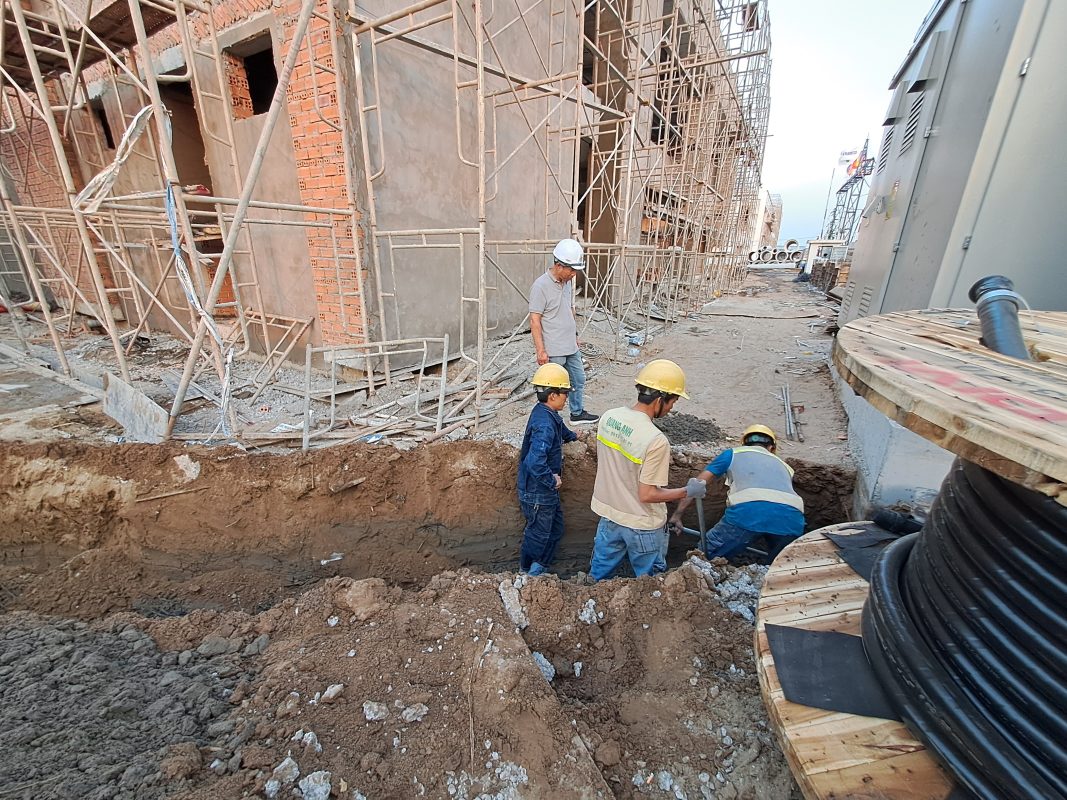
Related Posts
Factory Electrical Systems: Comprehensive Design and Implementation Guide
Discover the detailed and safe process of factory electrical systems design and implementation. [...]
Oct
Blueprints Required for Factory Construction Permits
Discover the necessary blueprints in factory construction permit applications, from floor plans to electrical and [...]
Oct
What Are the Requirements for a Factory Construction Permit? A Comprehensive Guide
Explore the documentation and steps needed to secure a factory construction permit for streamlined project [...]
Oct
Factory Construction Permit Procedures in Vietnam: Essential Guidelines and Documents
Learn the procedures for securing a factory construction permit in Vietnam, focusing on document preparation [...]
Oct
Key Steps in the Factory Construction Process
Discover the essential steps and requirements for building factories. [...]
Oct
Comprehensive Electrical Substation Solutions by Quanganhcons
Discover the cutting-edge electrical substation solutions offered by Quanganhcons for industrial applications. [...]
Oct
Investment Costs for a 1MWp Solar Power System and Influencing Factors
Explore the investment costs for a 1MWp solar power system in Vietnam and the influencing [...]
Sep
QuangAnhcons: Elevating Wind Energy Solutions
Explore QuangAnhcons' leadership in wind energy and renewable solutions in Vietnam. [...]
Sep
Electrical Contractor Strategies at Becamex Industrial Park
Discover the strategic advancements and partnerships of the electrical contractor at Becamex Industrial Park. [...]
Sep
Investment Insights for 1MW Wind Energy in Vietnam: Costs and Opportunities
Discover the detailed analysis of costs and opportunities for investing in 1MW wind energy projects [...]
Sep
Advanced Electrical Installation Solutions by QuangAnhcons
Explore advanced electrical installation solutions and modern technology with QuangAnhcons. [...]
Sep
Enhancing Industrial Electrical Services with Quanganhcons
Discover Quanganhcons' expertise in industrial electrical services, offering efficient and sustainable power systems. [...]
Sep
Comprehensive MEP Solutions by QuangAnhcons: From Design to Maintenance Excellence
Discover optimal MEP solutions with QuangAnhcons, dedicated to excellence from design through maintenance. [...]
Sep
Comprehensive Electromechanical Contracting Solutions by QuangAnhcons
Explore QuangAnhcons' comprehensive services for efficient and safe energy system solutions. [...]
Sep
QuangAnhcons: Empowering Industrial Energy Solutions
Discover how QuangAnhcons delivers optimal industrial EPC solutions. [...]
Sep
Effective Industrial Construction Management and Execution
Optimize your industrial projects from design to execution with our contractor services. [...]
Sep
QuangAnhcons: Pioneers in M&E and Renewable Energy Solutions
Discover QuangAnhcons' innovative M&E services and renewable energy solutions. [...]
Sep
QuangAnhcons: Expertise and Outstanding Services in the Electrical Sector
Discover the unmatched expertise and services of QuangAnhcons, setting superior standards in the electrical contracting [...]
Sep
QuangAnhcons: Innovation and Precision in Industrial Electrical Contracting
Discover QuangAnhcons, a top contractor offering superior electro-mechanical solutions. [...]
Aug
Expert Solutions for 2x2500kVA Substation Projects with QuangAnhCons
Explore QuangAnhCons, a forefront entity in designing and constructing large industrial substations. [...]
Aug